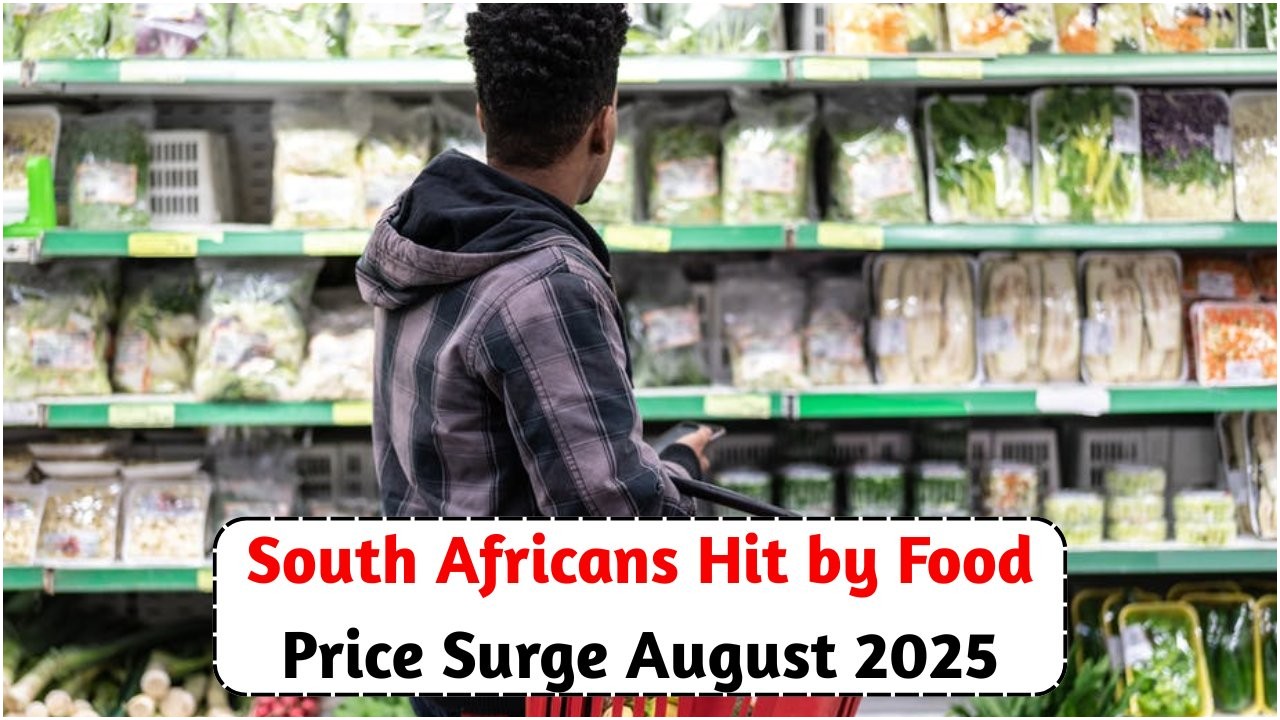August’s Food Inflation Shock: As South Africans grapple with a rising cost of living, August brought an unexpected twist to the saga of inflation, particularly when it comes to food items. The latest figures have left many families reeling as basic foodstuffs have soared beyond reach, impacting household budgets nationwide. The inflation spike has been driven by a confluence of factors, including adverse weather conditions affecting crops, global supply chain disruptions, and local economic challenges. This surge has not only affected lower-income households but also those once comfortably in the middle class, highlighting the pervasive nature of this financial hurdle.
Understanding the Factors Behind August’s Food Inflation
South Africa’s food inflation in August was exacerbated by several key factors. The ongoing drought conditions in various parts of the country have significantly reduced agricultural output, leading to increased costs for locally sourced produce. Additionally, the global supply chain disruptions, a ripple effect of the pandemic, have led to shortages and delays in imports, further straining the market. The South African Rand’s volatility against major currencies has also played a role, making imported goods more expensive and impacting the cost of everyday essentials.
- Adverse weather conditions affecting crops
- Global supply chain disruptions
- Volatility of the South African Rand
- Increased fuel prices affecting transport costs
- Rising demand post-pandemic
Impact on Households
| Household Type | Impact Level | Commonly Affected Items | Adaptation Strategies |
|---|---|---|---|
| Low-Income | Severe | Maize meal, bread, cooking oil | Switching to cheaper brands, reducing portion sizes |
| Middle-Income | Moderate | Meat, dairy products, fruits | Bulk buying, seeking discounts |
| High-Income | Minimal | Imported goods, gourmet items | Substituting with local alternatives |
Strategies to Cope with Rising Food Prices in South Africa
For many South Africans, adapting to the rising food prices has become a necessity. Households are employing various strategies to mitigate the impact on their budgets. One popular approach is bulk buying during sales to take advantage of discounts and save on future purchases. Others are opting to grow their own vegetables, which not only reduces expenses but also ensures a supply of fresh produce. Additionally, more families are turning to community support programs that offer food parcels and other assistance to those in need.
- Bulk buying during sales
- Growing home gardens
- Utilizing community support programs
- Switching to more affordable brands
- Reducing food waste through meal planning
Effects on Local Businesses
| Business Type | Challenge | Adaptation Measures | Outcome |
|---|---|---|---|
| Small Grocers | Supply shortages | Partnering with local farmers | Increased local produce sales |
| Restaurants | Rising ingredient costs | Menu adjustments | Maintained customer loyalty |
| Food Retailers | Import price hikes | Local sourcing | Improved profit margins |
Government Responses to Address August’s Food Inflation
The South African government has not been passive in the wake of August’s food inflation crisis. Several measures have been introduced to help alleviate the pressure on consumers. Subsidies for local farmers are being revisited to boost domestic production and reduce reliance on imports. Additionally, there is an increased focus on improving supply chain efficiencies to mitigate delays and reduce costs. The government is also engaging with international partners to stabilize the Rand and curb inflationary pressures.
Key Government Initiatives
- Subsidies for local farmers
- Improving supply chain efficiencies
- International partnerships for currency stabilization
- Consumer awareness campaigns
- Support for community food programs
- Incentives for local produce
- Tax relief for essential goods
Community Efforts in Response to August’s Food Inflation
Communities across South Africa have come together in response to the food inflation crisis, showcasing resilience and solidarity. Local initiatives have sprung up, such as food co-ops where members share resources and expertise to reduce costs. Many communities are also organizing workshops focused on sustainable living and food security, teaching valuable skills such as home gardening and preserving seasonal foods. These efforts not only help individuals cope with immediate challenges but also foster long-term resilience.
Community Initiatives
- Food Co-ops
- Workshops on sustainable living
- Community gardens
- Shared cooking facilities
- Resource sharing networks
August’s Food Inflation Shock: Impact on the Economy
The ripple effects of August’s food inflation shock extend beyond households, impacting the broader South African economy. With increased costs of living, consumer spending patterns have shifted, affecting industries reliant on discretionary spending. The agricultural sector faces particular challenges, with increased production costs threatening profitability and sustainability.
Economic Implications
- Reduced consumer spending power
- Impact on retail and hospitality sectors
- Shift towards essential goods
- Decreased economic growth
- Agricultural sector challenges
- Increased production costs
- Threat to crop yields
- Pressure on small-scale farmers
- Potential for increased unemployment
- Job losses in affected industries
- Reduced hiring in agriculture
- Impact on related sectors
FAQs on August’s Food Inflation in South Africa
What caused the food inflation in August?
Several factors, including adverse weather, global supply issues, and currency volatility, contributed to the August food inflation.
How are South African households coping?
Households are employing strategies like bulk buying, growing home gardens, and seeking community support programs to manage costs.
What is the government doing to help?
The government is revisiting subsidies, improving supply chains, and engaging with international partners to stabilize the economy.
Are local businesses affected by this inflation?
Yes, businesses, particularly small grocers and restaurants, are adapting by partnering with local producers and adjusting their offerings.
How can communities contribute to alleviating this crisis?
Communities can organize initiatives like food co-ops and workshops to promote sustainable living and resource sharing.









